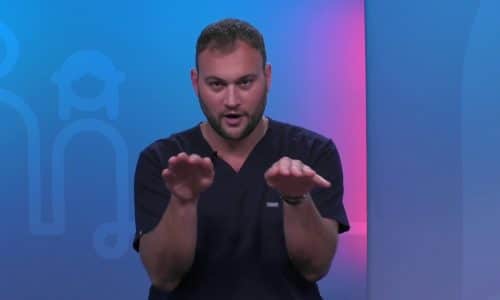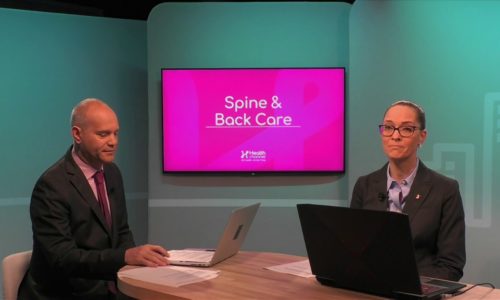Anatomy of the Spinal Cord |
The lumbar spine is the source of a lot of lower back pain. When patients complain about pain is going down to their legs, that’s usually coming out of this section of the spine, explains Dr. Georgiy Brusovanik, Spine Surgeon with Baptist Health South Florida,
The specialist describes with a digital imaging the anatomy of the spinal cord. He says there are bones and discs. In the thoracic spine, discs move very little. The rib cage makes the thoracic spine fairly immovable.
Transcript
First of all let’s talk about the different sections of the spine all right go ahead right here let’s see we have the the top a cervical spine vertebra you got it what are we talking about here so this is sort of the spine that general refers to the next section this is the lumbar spine and this is the source of a lot of our lower back pain when patients complain about pain going down their legs that’s usually coming out of this section this is the spot that we’re discussing today okay the mid-back somewhere between middle or top of the shoulder blade – sort of the seam of the lower back okay and there are a number of things that can produce mid-back pain that stand from this region but not necessarily from the spine and then there are some things that are felt around this region that can actually come from either the neck or the lower back so a lot to discuss so let’s talk about what stacked in between the bones they’re right here in between each vertebrae each of these rectangles aah-ha is a bone okay and then discs there the light blue stripes here they separate the bones now discs in the thoracic spine move very little in fact the ribcage which kind of initiates an authority spine and on both sides cages our chest the rib cage makes the thoracic spine fairly immobile so the common problems of instability or deformity that we see in the lower back actually are not happening with any high-frequency with any comparable frequency in the mid-back you








